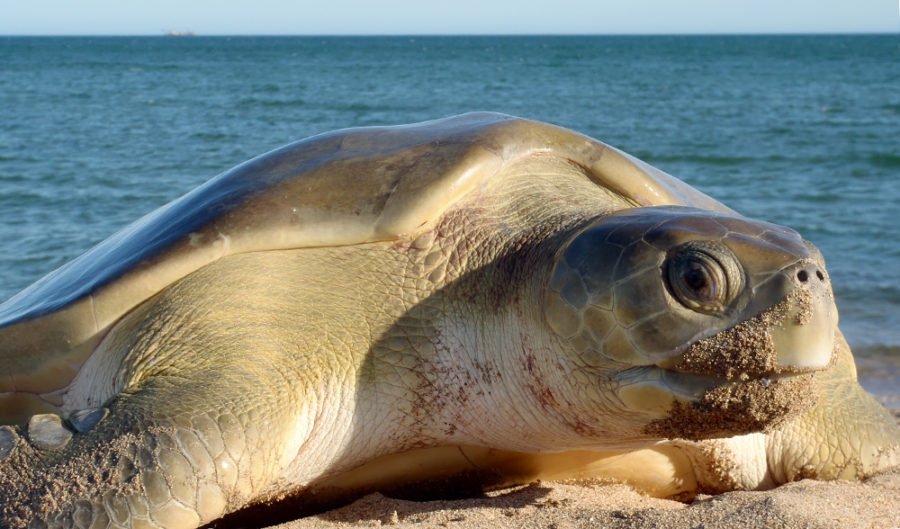Flatback turtle migration routes mapped

An important migratory corridor for Australia’s only endemic sea turtle has been mapped.
More than half of the route travelled by flatback turtles is protected by marine protected areas.
The study by a team of international reserachers, published this week in Marine Biology, highlights the value of using Marine Protected Areas (MPAs) to aid conservation efforts of vulnerable and endangered marine species.
“The flatback and other marine species in the area may be susceptible to accidental mortality, such as through collision with vessels and as fishery bycatch,” says Professor Graeme Hays, an animal movement expert from Deakin University.
Researchers from Deakin University, Swansea University (UK), and Pendoley Environmental consultancy in Western Australia spent seven years tracking turtle migration from their breeding grounds off the coast of Pilbara region in Western Australia.
“This is the first extensive study of its kind on flatback turtles, using satellite tracking,” Graeme told Australian Geographic.
Valuable satellite data for turtle migration
The flatback turtle (Natator depressus) is endemic to Australia, and is considered a vulnerable species in Western Australia. While their breeding sites often fall within protected areas, there has not been sufficient data about migration to find out whether the path to foraging grounds is safe, too.
The researchers tagged 73 flatback females by equipping them with transmitters on flexible harnesses. The signals were collected by Argos satellites in real-time – every 10 to 15 minutes as the turtle surfaces to draw a breath.
Because flatbacks haven’t been extensively studied, the data acquired was a treasure trove for the researchers.
“It’s like landing on Mars and discovering life there – everything is surprising,” says Graeme. “For example, we didn’t know they travelled such long distances.”
Flatback turtle migration spans marine reserves
The flatback migratory corridor spans 1150km along the coast of north-western Australia. In 2012 Australia established a Commonwealth Marine Reserve network, and data shows that 52 per cent of the corridor is covered by this network.
Furthermore, by comparing their data with that on other marine species in the area, the researchers found that the corridor largely overlaps with the migratory tracks of humpback whales, and the distribution ranges of several other marine species.
“This evidence allows informed decisions about activity in these marine areas that could be potentially dangerous to the species,” says Graeme.
Graeme is optimistic about future conservation efforts in light of the new evidence. “For me the glass is half-full, because a lot of those areas are already protected – it wouldn’t be the case in most other regions with similar issues across the world. Australia is ahead of the game, so to speak.”
Video: Animation of the flatback sea turtle migration routes from satellite tracking data. Credit: Deakin University

